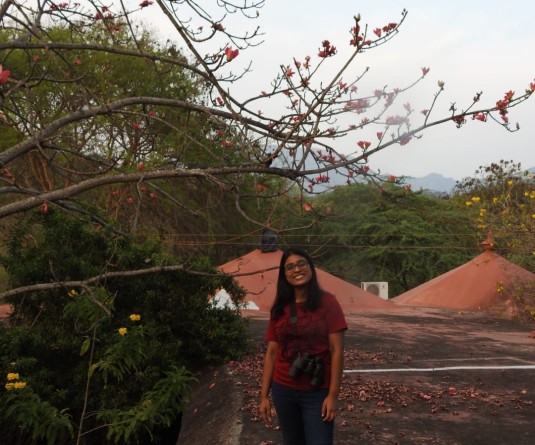
Ngaranmi Shimray
New Delhi
Circumstances that appears to be symptoms of policy paralysis is discussed to enable readers to decide whether it may not be totally wrong to conclude that tribals are slowly losing their sharpness.
Spontaneity is missing in the actions of Nagas whenever situation calls for taking urgent decision without inordinate delay. Take for instance the scrapping of FMR (Free Movement Regime) and border fencing issues. N Biren Singh as Chief minister of Manipur had urged the Ministry of Home Affairs (MHA) on September 23, 2023 to scrap the Free Movement Regime (FMR) between India and Myanmar and construct border fencing along the Indo-Myanmar border. MHA took four months to consider the proposal and announced its decision on 8th February 2024 that FMR has been scrapped to ensure the internal security of the country and to maintain the demographic structure of India’s North Eastern States bordering Myanmar. Two days ahead on 6th February 2024 MHA had announced its decision to fence the Indo-Myanmar border.
In Nagaland, where several tribes share social, economic, traditional and cultural heritage with their brethren across the border compared to only one Naga tribe in Manipur, there was hardly any protest from the Naga CSOs, political parties and public of the nature currently being witnessed. Now, in 2025 i.e. one year after decision by MHA a crescendo of protests are reverberating across Nagaland and Manipur. Protests at this stage, when decisions taken more than a year back are being implemented on ground, is meaningless. These protests may not yield any result as MHA will not roll back its decisions unless heaven falls. The protests are more or less symbolic for the slumbering Naga bodies to absolve themselves from their omission and redeem their self respect. Take, for example, another case of stupor from the Naga CSOs of Manipur. While the tribal-hill district of Churachandpur erupted on August 31, 2015 on the decision state legislature passing the Protection of Manipur People Bill, 2015, and two amendments in the Manipur Land Revenue and Land Reforms (7th Amendment) Bill and the Manipur Shops and Establishments (2nd Amendment) Bill, the Naga districts reaction was more or less subdued even if it seriously affected the Nagas too as these laws encroached into the rights of the tribals in “hill areas” safeguarded by Article 371-C.
Further, in the current ongoing ethnic conflict between the Meitei community and the Kuki-Zomi-Hmar tribes, when the issue of Manipur High Court’s Oral order dated 27th March 2024 favouring ST status for Meitei community became public only on 19th April 2023 and triggered the clashes on 3rd May 2023 during the Tribal Students’ Solidarity March, the Nagas stayed befuddled. The Nagas did not react to the violence perpetrated on the Kuki-Zomi-Hmar tribes by the Meiteis in Imphal. No Naga CSOs, leaders or bodies condemned the violence or pleaded for calm and peace to both parties.
Today, the tribes are faced with threats from the Meiteis community over designs of grabbing tribal lands in the “hill areas”, but there is no concerted efforts by both the group of tribes to counter it through representations against the multi-pronged attack of Meitei leadership to grab tribal lands by:
1) trying to become ST so that they can buy land from another ST with a favourable Order from the Manipur High Court through deceit and legal manipulations;
(2) proposed redrawing of district boundaries between valley districts and hill districts to amalgamate portions of “hill areas” with valley districts in the guise of administrative convenience; proposal for amendment of Article 371-C to blur the boundaries between valley and “hill areas” and dilute the powers and functions of the Hill Areas Committee (HAC);
(3) attempt to sabotage the working of the HAC given for “hill areas” under Article 371-C by an order of the Speaker in September 2021 (now withdrawn) inducting 9 MLAs from the valley districts (non-hill areas) in the HAC; and
(4) provocative suggestions for amendment of the MLR&LR Act to extend it to hill areas with designs to usurp tribal lands by manipulation of law and monetary inducement.
All these strategies solely aimed at grabbing tribal lands is a serious threat given the fact that the Meitei community has 40 MLAs out of 60 in the Assembly and controls the state government.
Furthermore, a number of Meitei leaders are openly opposing the directive of the Supreme Court for implementation of delimitation based on Census 2001 within three months, but the various tribal bodies who are likely to be benefited by three additional number of MLA seats, have been keeping mum. The tribal bodies and leaders should be submitting representations to the Delimitation Commission, MHA, Governor etc urging them to ensure that “rule of law” should be implemented and upheld in Manipur. It should be pointed out clearly that the dominant community should not be allowed to deny the tribes their rights under the Constitution.
The dominant community of Manipur has always been following such strategy of opposing everything that benefits the tribes and manipulating everything in their favour by majoritarian politics. The tribal bodies should fight back and carry out awareness campaigns in the hill district headquarters to educate the tribes of their rights. They should not make the familiar mistake of lying back and doing nothing while their opponents are working overtime to sabotage the decision of the Supreme Court. The silence of tribal bodies on all these issues is deafening. The slow and sluggish reaction/response begs a question whether policy paralysis has afflicted tribal leaders. Has decades of gradual stranglehold by extraneous forces over the tribal voices numbed the brains of tribal leaders? You decide. Citizens should, however, urge their leaders to petition various authorities to fight for the rights of the tribes of Manipur and Nagaland and not allow the oppressive forces to win.




